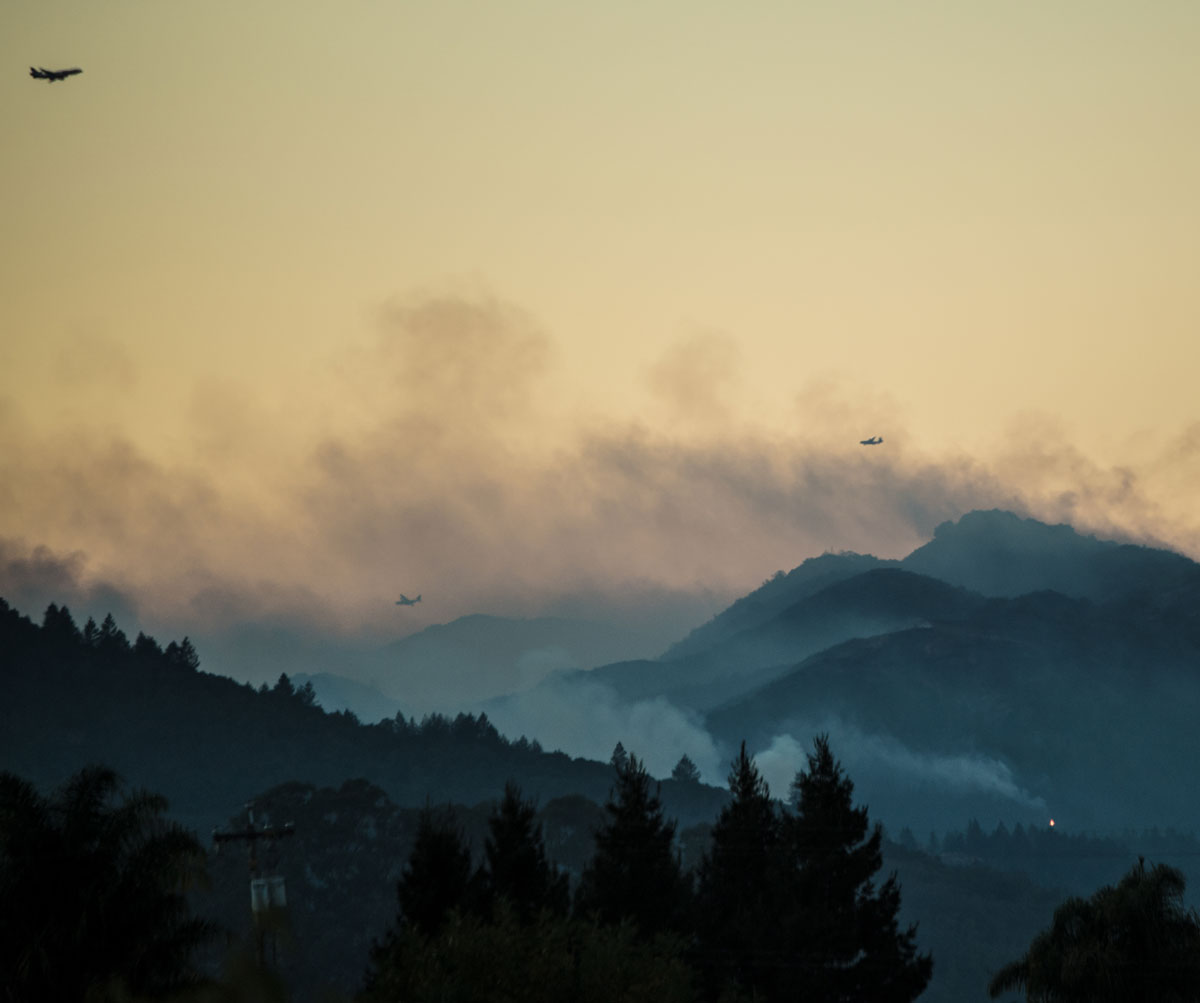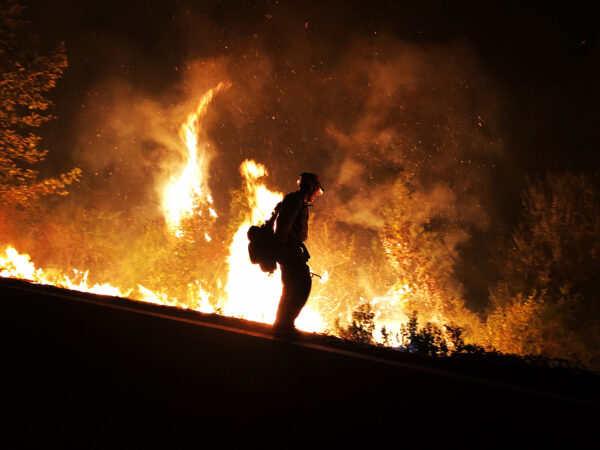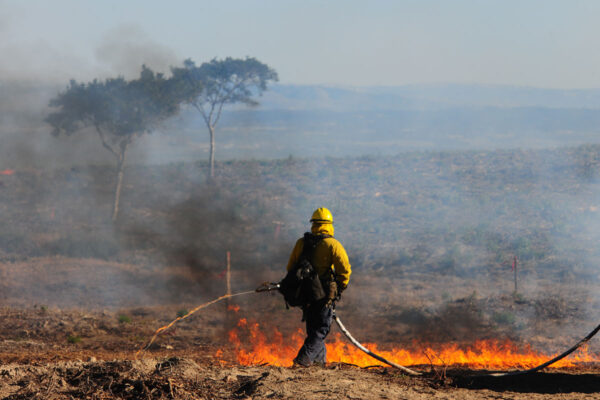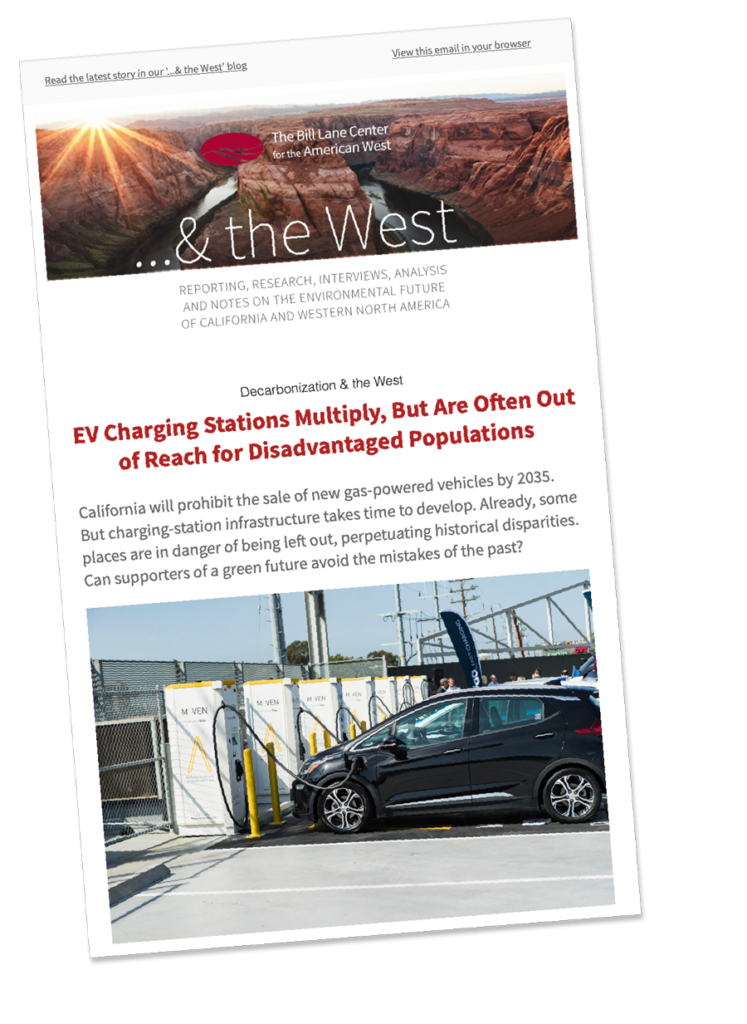All-Out Battle Three large aerial tankers make their last passes of the day to apply water or fire retardant slurry over the Nuns Fire outside of Napa, California in October 2017. USDA via via Flickr
Update, May 16, 2019
The fiscal reckoning that the U.S. Forest Service feared is approaching. Its reserve accounts covering firefighting costs are nearly drained. If the 2019 fire season is as intense as those of the past two years, and these accounts — which are dedicated to forest maintenance but used for firefighting in a pinch — are not replenished, the agency will be scrambling to pay firefighting costs. That was the message the Forest Service’s chief, Vicki Christiansen, told a Senate Appropriations subcommittee. “I’ve pushed our folks in the field and said you’ve got to plan like you have it,” Ms. Christiansen said. “I said the money’s coming, and the money isn’t there.”
Firefighters from the Platte Canyon Crew fighting 2011’s Wallow Fire near Greer, Arizona. Kari Greer/US Forest Service
Western wildfires are remembered by their names. These are never forgotten by those most affected, whether because an Interstate was closed, a beautiful landscape was shrouded in smoke, or a home or a neighborhood was lost, or they walked on cinders with the smell of cold ashes all around, or the worst — the fire killed people they knew.
Around Prescott, Arizona, they remember the Yarnell Hill Fire and the 19 firefighters it killed.
In eastern Arizona’s White Mountains, they remember 2011’s Wallow Fire, the state’s largest. On California’s central coast, they cannot forget that it took three months and over $230 million to put out 2016’s Soberanes Fire. Near San Francisco, toxic rubble from the deadly, fast-moving Tubbs fire still litters Santa Rosa.
For the federal and state officials, the names evoke statistics — acres burned, homes destroyed and dollars needed to put wildfires out. Across the West, these numbers have grown dramatically. But, unlike the East’s coastal states facing hurricanes, or those in Tornado Alley in the Midwest, the states in the West’s firelands have no automatic claim on federal disaster aid. Fire disasters, in federal law, are different.
Last summer, as the Lodgepole Complex of fires in north-central Montana burned more than 250,000 acres, the Federal Emergency Management Agency, without explanation, denied the state’s first request for disaster relief. Under political pressure, it eventually relented.
Since fire disasters have a lesser claim on general disaster funds, they have increasingly been paid for by siphoning away money earmarked to prevent forest fires by reducing the dead and living trees and the underbrush that makes them worse. Robbing the forests’ future to pay for present disasters is becoming routine.
The West’s Summertime Menace Spreads into the Spring and Fall
When the Thomas Fire in southern California burned through December and past New Years Day 2018, it marked a striking expansion of the West’s fire season. Click here to view the progression of the fire in the interactive map below. The map, a co-production of the Bill Lane Center for the American West and EcoWest, displays wildfires nationwide from over the past 15 years.
Click on a fire symbol to zoom into an animation, or use the slider to navigate over the years.
Interactive Map: Wildfires in the US Since 2003
Most Expensive Wildfires – Estimated Suppression Costs
Click bars to show fire animations above
US Forest Service at the Center of Wildfire Response
The federal Forest Service is the agency at the point of the spear, fighting wildfires and paying suppression costs. Two decades ago, these costs represented 15 percent of its budget; now they absorb 55 percent of the total. When fire costs break the planned budget, as they did two of the last three years, the agency must find another way to pay for them.
Going Up in Smoke
Fire suppression costs for Federal agencies, 1985-2017

Bill Lane Center for the American West
In 2015, according to an agency representative, when the federal cost of fighting wildfires exceeded $1.4 billion, the forest service borrowed $700 million from other accounts, including $22 million from a fuels reduction program.
Why are wildfires getting more expensive to fight? One reason is the legacy of Smokey the Bear — the decades of the 20th century when the mantra of forest managers, bolstered by the Smokey the Bear advertising campaign, was avoiding fires and putting them out quickly. This allowed trees and brush that would normally have burned in small fires to remain in place. As this fuel accumulated, fires got worse.
Other factors, according to Mark Rey, a former Undersecretary of Agriculture for Natural Resources, are longer fire seasons, rising temperatures, more trees killed by beetles who are no longer killed by cold winters — all the results of climate change.
But a central issue is the growing number of people seeking to live in the wild. This cost driver he said, “is the settlement patterns, part of the explosion of houses in the wildland-urban interface.” The area, known to forest policy aficionados by its acronym, the WUI (pronounced WOO-ee), has various definitions, but no matter the methodology, all agree the number of homes at risk has dramatically increased in size over the past three decades. Their growth is mapped by the SILVIS project at the University of Wisconsin.
Ray Rasker, of Montana’s Headwaters Economics, reported four years ago that only 16 percent of land near forests has been developed. When half the remainder is developed, the report said, “annual firefighting costs could explode to between $2.3 billion and $4.3 billion.”

Wildland Urban Interface as identified by the University of Wisconsin’s SILVIS lab. Bill Lane Center for the American West
WUI Development Opens New Fronts in Wildfire War

Smoke from the Thomas Fire hovers over Ventura County, California in December 2017.USDA via Flickr
As Mark Rey said, “You can find a lot of ways to save money by being cost-effective but those advances are going to be swamped because of the number of places you have to defend.”
Fires in the WUI require aggressive defense, the price society pays for individuals’ desire to live away from civilization. Yarnell, Arizona (map), where 19 firefighters died, was described by Fernanda Santos in her book “The Fire Line” as “a hideaway for hippies, artists, retirees, and others looking to forget or be forgotten.
The cost of suppression is the worry of the Forest Service, state firefighting services like CALFire, and local departments. In each of the last three years, the Forest Service has spent more than $1.6 billion fighting fires; in 2017 it was $2.4 billion. A firefighting budget reflects the average cost of firefighting for the last decade. In recent years, it has seldom been enough.
“When that mechanism was set up, the 10-year average was a number that wasn’t fluctuating wildly,” Mr. Rey said. “And the forest service was managing significant trust funds which had cash balances that could be borrowed from without affecting other programs. Trust funds were a manifestation of timber sale program.” Now, he said, “the timber sale program is much smaller … Those trust funds are exhausted very quickly.” The service “goes through triage — to keep borrowing of funds in same area, the first place to borrow is fuels reduction.”
In Congress, Potential Fixes Run Aground
The irony isn’t lost on lawmakers from the West. For the last several years, senators, led by Ron Wyden, an Oregon Democrat, and Michael Crapo, an Idaho Republican, have pushed legislation letting states with fire disasters draw on the federal emergency funds available to states with hurricane or tornado disasters.
The legislation, a congressional aide explained, “changes the definition of natural disasters to include wildfires — then make an adjustment to create room in the budget so we’re not robbing from other natural disasters.” But despite bipartisan regional support, the bill has been sidelined after being used as a bargaining chip by other legislators, congressional aides explained.
In Mr. Rasker’s view, “There’s always someone who says: ‘Here’s an opportunity to force the forest service to do something.’ They have some Machiavellian idea of how the forest service should handle management.” Often those blocking the bills are looking for less environmental regulation and more timber cutting.
“It’s a pity,” Mr. Rasker added. “It really hurts the communities that get caught in the middle.”

In 2006, California’s Department of Forestry changed its name and logo to CALFire.
In California, a Brighter Picture Clouded by Ever-Bigger Fires
California has a different budget system than the federal Forest Service. So far, according to Scott McLean, a CALFire spokesman, has managed to pay for the fire disasters that keep on coming, though in the last two years CALFire exceeded its budget and needed to take money from the state’s rainy day fund.
“The fires are burning with more intensity,” Mr. McLean said. “They are faster. They are started with more resources. We had significant fires throughout the year. The Tubbs fire was the most destructive fire in California history.” Four years in the past decade, state firefighting costs were about $500 million or more. Eleven years ago, the California Department of Forestry changed its title to reflect reality. It became CALFire.
No one has publicly suggested the U.S. Forest Service be called FEDFire — though that name would reflect the evolving reality. With another drought peering over the horizon, fire dangers in the West continue to grow, and the original purpose of the Forest Service — supporting healthy forests — continues to be overshadowed by the job of fighting fires.
Read Next in …& the West
Changing Currents: Picturing a Northwest Without Cheap, Public Hydropower
The power gained by harnessing the Columbia River paved the way for industrial development and widespread farmland irrigation. But what if, instead of public utilities, that power had been sold by private firms seeking profits?































